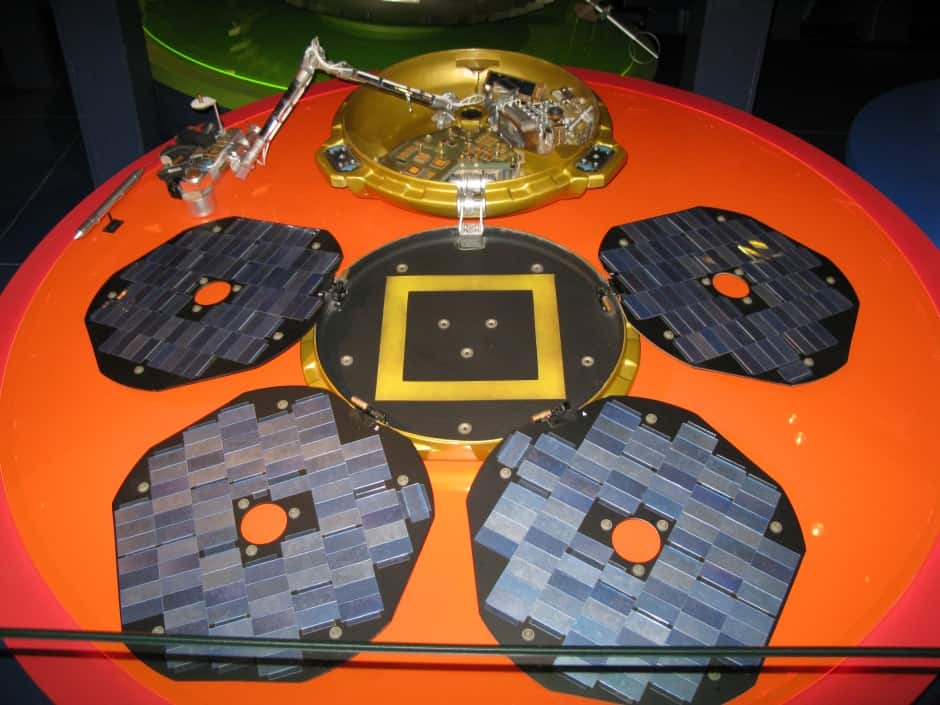
Combining computer simulation with high-resolution imaging, a team from the DeMontfort University in Leicester has determined the lander fully unfurled at least three of its four solar panels, and may even have taken data from the Martian surface for several months, but was unable to transmit information back to Earth or receive instructions. There is even a tantalising (but very slim) chance Beagle 2 might still be operational today.
Beagle two was part of the European Space Agency's Mars Express mission, and was equipped to sample the Martian surface soil and atmosphere, and analyse the samples for chemical compounds that might indicate the presence of past or current life. It was supposed to transmit back to earth on Christmas Day 2003, but no signal was ever received and the tiny static lander (around the diameter of a bicycle wheel) was assumed to have been destroyed and its parachute and airbag landing system deemed a failure.
In 2015, however, NASA's Mars Reconnaissance Orbiter received an image from its HiRise camera that revealed Beagle 2 was in fact intact on the surface. The news came too late for the project’s principal investigator, Prof Colin Pillinger of the Open University, who had died the previous year. The images revealed that not all of the four solar panels on the lander had deployed, but were not clear enough to give any more information.
The DeMontfort team, led by Nick Higgett, used 3-D modelling to simulate how sunlight would bounce off the panels in various states of deployment, and compared these simulations to the original HiRise images.
"In order to do this, our visualisation specialist Teodora Kuzmanova had to create a physically accurate 3D model of the Beagle 2 Mars Lander with surfaces that would accurately reflect virtual sunlight,” explained Higgett. “The angle of the sun had to be simulated along with position of a virtual camera that could take pictures equivalent to NASA’s Reconnaissance Orbiter. Finally these images had to be pixelated to match the resolution of the Orbiter’s images.”
Former Beagle 2 mission manager Mark Sims, now Professor of Astrobiology at Leicester University, came up with the idea of combining modelling with imaging to look at reflections. “The work shows frustratingly that Beagle 2 came so close to working as intended on Mars,” he said.
The closest matches between simuations and real images indicate that three of the panels deployed fully, and the fourth may have deployed partially. The failure to communicate may have been due to the partially deployed panel obstructing the lander’s antenna, or possibly to an electrical fault incurred during the rough landing. The researchers, working with colleagues at the University of Leicester, believe that the lander may have gone into surface operation mode, and with three panels open would have had enough energy to begin its preprogrammed operations and take data. Experience of other landers suggests that it may have worked for hundreds of days, but could not send any data to the orbiting Mars Express satellite. And the longer than expected lifetimes of some NASA landers gives rise to the faint possibility – although one dismissed by Prof Sims, who accepts that he will never know what happened to the craft – that its systems might even still be operational.




Red Bull makes hydrogen fuel cell play with AVL
Formula 1 is an anachronistic anomaly where its only cutting edge is in engine development. The rules prohibit any real innovation and there would be...